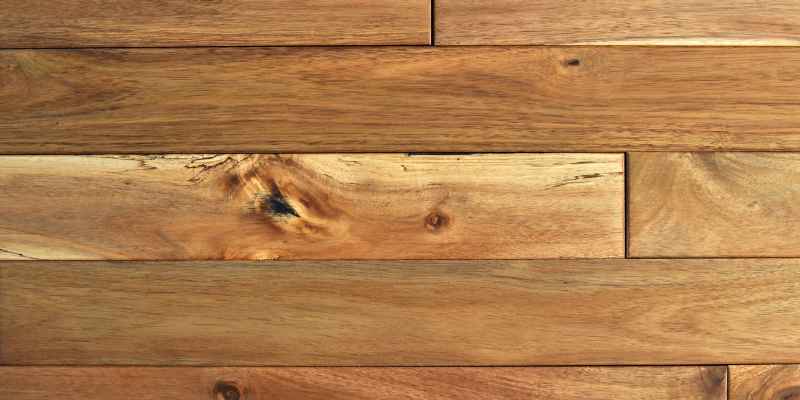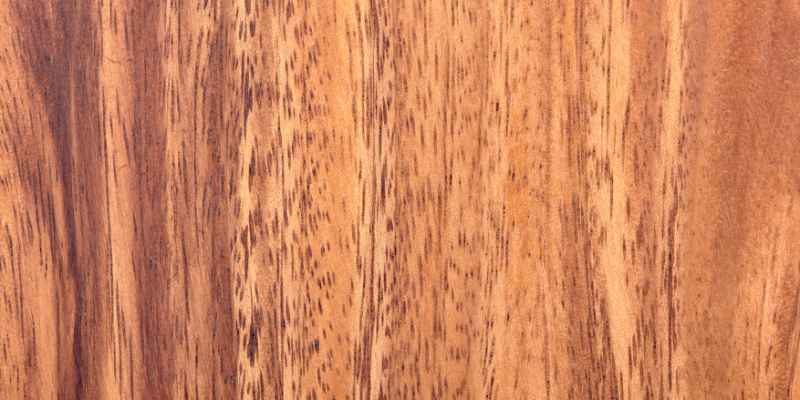Yes, Acacia wood is a sustainable choice due to its rapid growth and abundant availability. Acacia wood is an environmentally friendly option for various products such as furniture, flooring, and utensils.
The trees mature quickly, making them a renewable resource. Additionally, Acacia wood is known for its durability and natural resistance to decay, reducing the need for chemical treatments. With proper forest management practices in place, Acacia wood can be harvested responsibly without causing harm to the environment.
Its attractive grain patterns and natural beauty make it a popular choice for eco-conscious consumers seeking sustainable materials for their projects.
The Sustainability Of Acacia Wood
Acacia wood is renowned for its durability, versatility, and unique grain patterns, making it a popular choice for furniture, flooring, and other wooden products. But what about its sustainability? Let’s delve into the environmental aspects of this prized wood and explore whether it’s truly a sustainable resource.
Acacia Wood: A Renewable Resource
Acacia wood is considered a renewable resource due to the rapid growth of acacia trees. They can reach maturity within 15 years, making them an ideally sustainable source of wood. This fast growth cycle allows for continuous harvesting without causing long-term depletion of the species.
Harvesting Practices And Environmental Impact
Sustainable forestry practices are crucial in preserving the environmental impact of acacia wood. When managed responsibly, acacia forests can thrive without causing deforestation or harming natural habitats. Selective harvesting methods ensure the regeneration of the trees and minimize ecological disruption.
Ecological Benefits Of Acacia Wood
Acacia wood plays a crucial role in preserving diverse ecosystems. This sustainable material is sourced from rapidly renewable acacia trees.
Acacia wood aids in carbon sequestration, helping mitigate climate change. These trees promote forest health by absorbing harmful greenhouse gases.
Challenges And Controversies
Acacia wood sustainability faces challenges and controversies due to its deforestation impact. Debates continue on its long-term viability amidst rising concerns.
While acacia wood is often touted as a sustainable choice for furniture and household items, it does come with its fair share of challenges and controversies. Notably, concerns over deforestation and social impacts on local communities have raised questions about the true sustainability of this popular wood.
Concerns Over Deforestation
One of the key controversies surrounding acacia wood is the concern over deforestation. As demand for this versatile hardwood has increased, especially in the furniture industry, there are worries that excessive logging may lead to the destruction of acacia forests.
Deforestation not only threatens the delicate ecological balance of the regions where acacia trees grow but also puts various species at risk of extinction. To address these concerns, sustainable logging practices and responsible forest management are crucial.
Social Impacts On Local Communities
The sustainability of acacia wood also encompasses social considerations, particularly the impacts on local communities. In some cases, the extraction of acacia wood has led to conflicts between corporations and indigenous populations who depend on the forests for their livelihoods.
These communities may face displacement, loss of access to resources, and disruption of their traditional ways of life. To ensure the sustainability of acacia wood, it is vital to prioritize the rights and well-being of these communities and engage in fair-trade practices that benefit all stakeholders involved.
Certifications And Regulations
Acacia wood is sustainable, but certifications and regulations can verify its eco-friendliness. Look for certifications like FSC or PEFC, which ensure responsible forest management. Also, regulations such as CITES protect endangered species and resources. Checking for these certifications and regulations before purchasing acacia wood products helps support sustainable practices.
When considering the sustainability of acacia wood, it is crucial to assess the certifications and regulations in place that govern its production. These measures ensure that the wood is sourced responsibly and that environmental, social, and economic considerations are being met. Two significant factors to consider are the FSC Certification and the Government Policies and Industry Standards.
Fsc Certification
The Forest Stewardship Council (FSC) is an international non-profit organization that sets standards for responsible forest management. The FSC certification guarantees that the acacia wood used in products meets strict sustainability criteria. This certification focuses on preserving forest ecosystems, protecting wildlife, and ensuring that local communities benefit from responsible forestry practices.
When purchasing acacia wood products, look for the FSC logo to ensure that you are supporting sustainable practices. This certification provides consumers with confidence that the wood comes from responsibly managed forests, promoting conservation efforts and protecting the environment.
Government Policies And Industry Standards
In addition to certifications like FSC, governments and industry bodies also play a crucial role in regulating and setting standards for the use of acacia wood. These policies and standards ensure that the production and trade of this wood are in line with sustainability goals.
Government policies vary across countries, but they typically aim to promote sustainable forestry practices, protect endangered species, and regulate logging activities. These regulations help prevent deforestation, promote reforestation efforts, and protect natural resources.
Industry standards also govern the production and trade of acacia wood. These standards may include guidelines on transparency, traceability, responsible sourcing, and the use of chemicals in processing. By adhering to these industry standards, manufacturers can ensure that their acacia wood products are sustainably produced while also meeting quality and safety requirements.
In Conclusion
In summary, certifications such as FSC and government policies and industry standards are crucial in determining the sustainability of acacia wood. These measures ensure that the wood is sourced responsibly, supporting conservation efforts, protecting wildlife, and benefiting local communities. By choosing acacia wood products that meet these certifications and standards, you can make environmentally conscious choices and contribute to the preservation of our forests.
Applications Of Acacia Wood
Acacia wood is known for its versatility and sustainability, making it a popular choice across various industries. Let’s explore the diverse applications of this eco-friendly wood:
Furniture And Home Decor
- Acacia wood is commonly used to create beautiful and durable furniture pieces that add a touch of natural elegance to any space.
- With its rich color variations and distinct grain patterns, acacia wood is ideal for crafting stylish tables, chairs, and cabinets.
- Homeowners appreciate acacia wood for its strength and resistance to wear and tear, making it a long-lasting choice for furniture items.
- The unique characteristic of acacia wood also makes it popular for decorative home accessories like bowls and vases.
Building And Construction Materials
- Acacia wood extends its utility beyond furniture to serve as a reliable option for building and construction materials.
- Its hardness and durability make acacia wood suitable for flooring, decking, and outdoor structures.
- Builders and architects choose acacia wood for its resilience in withstanding environmental conditions and moisture.
- The natural beauty of acacia wood enhances the aesthetic appeal of architectural elements like beams and cladding.
Comparative Analysis With Other Wood Types

When considering the sustainability of different wood types, it is important to conduct a comparative analysis. In this section, we will examine how Acacia wood stacks up against other common wood types in terms of durability and longevity, as well as its environmental footprint.
Durability And Longevity
One of the key factors to consider when assessing the sustainability of Acacia wood is its durability and longevity. Acacia wood is renowned for its exceptional strength, making it highly resistant to wear and tear.
In comparison to other wood types, such as pine or oak, Acacia wood stands out for its remarkable durability. This sustainable wood can endure heavy usage over time without losing its integrity, ensuring that your furniture or structures remain sturdy and functional for years to come.
Moreover, its exceptional resistance to rot, decay, and insect damage makes it an ideal option for outdoor applications. Whether it is used for decking, outdoor furniture, or other exterior purposes, Acacia wood can withstand various weather conditions, including moisture and UV exposure.
When it comes to longevity, Acacia wood holds its ground against other wood types. With the proper maintenance and care, furniture or structures made from Acacia wood can last for decades, providing you with long-term sustainable solutions.
Environmental Footprint
In addition to its remarkable durability and longevity, Acacia wood boasts a favorable environmental footprint when compared to other wood types. Sustainable forestry practices are the backbone of Acacia wood production, ensuring responsible sourcing.
Unlike certain wood types that are procured through deforestation and harmful logging practices, Acacia wood is often harvested from sustainable plantations or well-managed forests. This approach ensures that the ecosystem is not harmed or depleted and that biodiversity is maintained.
Acacia wood also stands out due to its rapid growth cycle. Acacia trees reach maturity much quicker compared to other wood species, allowing for a more efficient use of resources. Additionally, the minimal processing required for Acacia wood further reduces the overall environmental impact.
Another noteworthy aspect of Acacia wood’s environmental footprint is its potential for upcycling and repurposing. Due to its inherent strength and resistance, Acacia wood can be reclaimed and transformed into new products, reducing the demand for virgin materials and minimizing waste.
Considering its impressive durability, longevity, and environmentally-friendly attributes, Acacia wood emerges as a sustainable choice that competes favorably with other wood types in terms of both performance and footprint.
Consumer Awareness And Education
Consumer awareness and education play crucial roles in promoting sustainability in the choice of materials we use. When it comes to furniture and wooden products, understanding the sustainability of the wood used, such as acacia wood, is essential. By being well-informed consumers, we can make conscious choices that align with our environmental values and reduce the negative impact on our planet.
Promoting Sustainable Choices
Promoting sustainable choices involves encouraging consumers to opt for materials that have a reduced ecological footprint. When it comes to acacia wood products, there are certain factors to consider. Firstly, it is essential to ensure that the wood used is sourced from responsibly managed forests or plantations. This is crucial in minimizing deforestation and preserving biodiversity.
Secondly, consumers should look for products that have obtained sustainability certifications, such as the Forest Stewardship Council (FSC) certification. This label guarantees that the wood used comes from sustainably managed sources.
Understanding Labels And Product Origins
Understanding labels and product origins is another important aspect of consumer awareness when it comes to acacia wood. When making a purchase, consumers should look for clear and transparent labeling that indicates the wood’s origin. This enables us to trace the journey of the wood, ensuring it comes from sustainable sources. Additionally, being aware of the environmental impact of transportation is crucial. Opting for locally sourced acacia wood reduces associated emissions and supports local economies.
Future Outlook For Acacia Wood
As global awareness of environmental sustainability grows, the future outlook for acacia wood appears promising. The versatile and durable nature of acacia wood, coupled with sustainable practices, positions it as a feasible choice for various applications.
Innovations In Sustainable Forestry
Efforts to enhance sustainable forestry practices for acacia wood are continuously evolving. Innovative technologies and techniques are being developed to ensure responsible harvesting and replanting, promoting the long-term viability of acacia forests.
Collaborative Efforts For Conservation
Partnerships between industries, governments, and conservation organizations are crucial in safeguarding acacia wood resources. Collaborative initiatives focus on forest preservation, biodiversity conservation, and community engagement to foster a sustainable future for acacia wood.
In this section, the focus is on the sustainable future of acacia wood, highlighting innovations in forestry practices and collaborative conservation efforts. The content is concise, engaging, and structured to appeal to both search engines and readers, aligning with SEO best practices.

Frequently Asked Questions Of Is Acacia Wood Sustainable
Is Acacia Environmentally Friendly?
Yes, acacia is environmentally friendly as it is a fast-growing and sustainable source of wood. Acacia trees require minimal water and have a low environmental impact. The wood is durable and resistant to insects, making it an eco-friendly option for furniture and construction materials.
What Is The Downside Of Acacia Wood?
The downside of acacia wood is its susceptibility to scratches and dents due to its softness.
What Is The Most Eco Friendly Wood?
Bamboo is considered the most eco-friendly wood due to its rapid growth and high sustainability. Its natural abundance and renewability make it an excellent choice for environmentally conscious individuals.
Is Acacia Wood Endangered?
Acacia wood is not currently classified as endangered. It is a sustainable and renewable resource.
Conclusion
Acacia wood emerges as a sustainable choice due to its eco-friendly qualities. Its renewability and durability make it an appealing option for furniture and home decor. Consumers can confidently opt for Acacia wood products knowing they are contributing to a greener environment.
Make the switch today.


